Pandemic, other economic forces changing the media landscape in the Coachella Valley
The Coachella Valley's media ecosystem has changed after the COVID-19 pandemic forced businesses to close, throttled local advertising and exacerbated the 24-hour news cycle. And experts and local media executives say while the appetite for local news is still robust, the path forward will be challenging.
The developments include cutbacks to TV news and print newspapers, departures of some high-profile personalities and reporters, the closure of some digital outlets, and the formation of new ones.
NBC Palm Springs, for example, recently cut its morning newscast from 2 hours to 1, and its midday newscasts from 1 hour to 30 minutes. While stepping up its digital offerings, The Desert Sun closed its press in Palm Springs, moved printing to Arizona and eliminated its Saturday print edition. Local internet radio station iHub Radio shut down its live operations while a new digital publication, the Palm Springs Post, launched.
Other economic forces are at work, too.
As housing prices and inflation rise and wages remain low compared to larger media markets, some local newsrooms say attracting and retaining talent is increasingly challenging. Some outlets are rethinking the way they do business as a number of journalists leave the industry altogether.
"TV stations are in the same boat as newspapers — there's been a lot of cutbacks and it shows," said Hank Plante, an on-air political analyst for NBC News Palm Springs and former reporter who spent decades in the media industry.
"I hate to guess at the number of stories that aren't getting covered because [they] just don't have the personnel," he added, speaking about local news outlets broadly.
Small market, high turnover
Recent changes at NBC Palm Springs exemplify some of the dynamics at play.
In the past year, the station has lost several on-air personalities and reporters including Gino LaMont, Sara Sanchez, Joe Smith, Sandie Newton, Mike Everett and Kitty Alvarado. Producer Kendall Balchan left the station and now works for The Palm Springs Post. Overall, staffing at the station is down at least 20% since the start of pandemic restrictions in March 2020.

"Not all of the attrition is pandemic-related," Bob McCauley, station manager, said in an email. Some technical jobs have been centralized to Texas, he said. "We are only down a few jobs from where we used to be.”
The station employed about 70 people prior to the pandemic, but the staff has shrunk to 55, according to McCauley. Only nine are on-air employees according to the station’s website: anchors Thalia Haden, Tim O’Brien and Olivia Sandusky, meteorologist Jerry Steffen, special correspondent Chloe Carlson, news reporters Carmela Karcher and Kamari Esquerra, sports reporter Brandy Flores and Manny de la Rosa, aka Manny the Movie Guy.
NBC Palm Springs’ main competitor, KESQ News Channel 3, also saw staff leave during the pandemic, but remains more robustly staffed. Among the departures were weekend anchor and reporter Tom Tucker, reporter Madison Weil, lifestyle reporter and weekend anchor Caitlyn Thropay and sports and news reporter Taylor Begley.
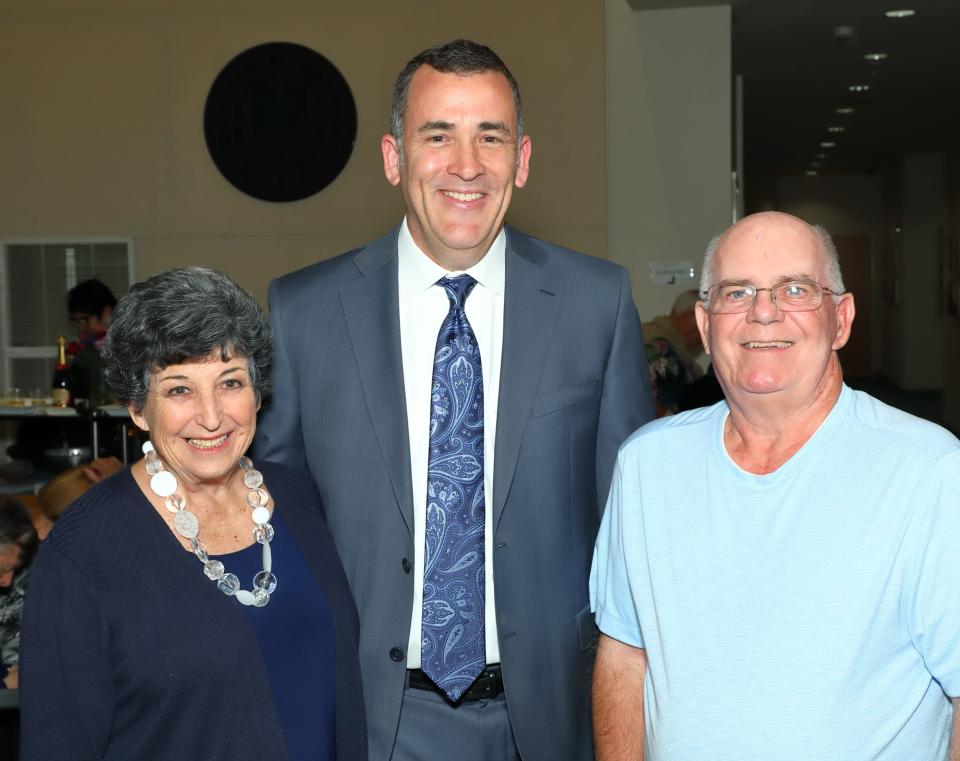
KESQ, which provides newscasts for CBS 2, ABC 3 and Fox 11, has 16 on-air news team members, according to its website. There are about 50 full- and part-time employees contributing to the station's newscasts, including technical directors and audio operators, said Jerry Upham, general manager at Gulf California Broadcasting, which owns KESQ. This is separate from the station’s sales team.
Upham said KESQ "kept the vast majority of our staff intact" during the pandemic.
The Desert Sun’s printing operations have relocated, but its journalists haven’t. The newspaper’s employees have been working in a hybrid fashion, with many working remotely from their homes in the Coachella Valley and others working at least part-time in the office, which is still located at The Desert Sun building on North Gene Autry Trail in Palm Springs.
The hiring challenge
Larger publications and TV stations often source talent from smaller news outlets, and the current labor market may be exacerbating that trend. Employers nationwide posted a record 11.5 million job openings in March, meaning the United States now has an unprecedented two job openings for every person who is unemployed.
"The big companies right now, they need people," said Aitor Lozano Vias, a former NBC Palm Springs writer and producer. When he was in the Coachella Valley, he said larger stations would call the newsroom and ask whoever picked up the phone what their job was and if they were interested in leaving. That's how he ended up leaving Palm Springs, ranked as the 146th TV market in the country, and moving to Chicago, which is ranked No. 3, last fall.
LaMont, who was the news director and an anchor at NBC, recalled that each spring, journalism graduates would flood the station with resumes and reels just "begging" for their first gig. But in his final year at the station, he said he was lucky to have one or two qualified applicants apply for open positions.
Locally, the number of students interested in journalism has decreased slightly, according to Laurilie Jackson, assistant professor of arts and media at College of the Desert and a part-time weekend anchor at KESQ.
“It's difficult to tell if this change is related to the pandemic, the industry's downsizing, or the political climate where journalists are often mocked and called the ‘enemy of the people,’” Jackson said via email.
Jackson said that, in the past two decades, she has seen more students interested in national stories or “whatever seems to be trending on their social media feeds.”
“This is what they are talking about – what they want to write about,” she said. “Very few want to cover the local school board meeting or a city council meeting. I don't think the community realizes how much the news industry has changed and how much it impacts them.”

LaMont also blames social sharing sites like TikTok and YouTube for what he thinks is fewer young people seeking jobs in television news.
"All of a sudden being on TV isn’t that big a deal," LaMont said. Those would-be broadcasters don't even watch traditional television, he added.
Upham, of KESQ’s parent company, offered a similar if tempered observation that it is "more difficult to find people" and that applications for reporters and producers may be down a little.
"(There's) more competition in the media landscape in general," Upham said.
The challenge with turnover and finding new candidates is not limited to TV. The Desert Sun newsroom, too, has seen significant turnover since the pandemic. About a dozen staff members left between late 2020 and mid-2021, though nearly all have been replaced. An editor position has been open for about a year, Executive Editor Julie Makinen said.
“We had several very well-qualified candidates, but all opted to take other jobs in larger markets,” she said.
The newsroom now has 15 reporters, six editors, three photographers, a digital producer and typically three interns.
Plante, the veteran TV reporter who moved to Palm Springs after a long career in San Francisco, said compensation is a factor in small markets like the Coachella Valley.
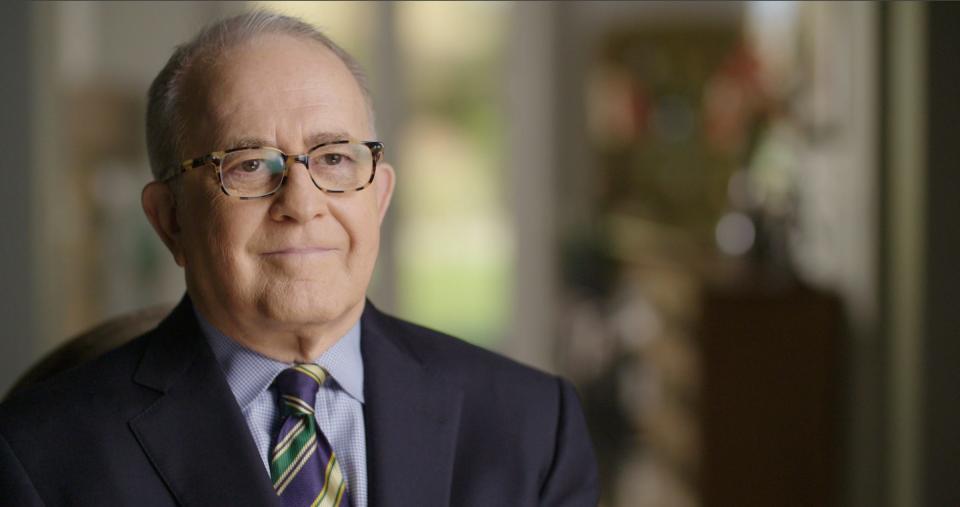
"I do wish that the pay was better here because it's in our interest to keep good people around,” he said. “You've got to make a living. You don't want to make $35,000 a year forever."
Kitty Alvarado, a former NBC Palm Springs reporter, said many journalists can’t stay in the Coachella Valley without the support of a higher-earning spouse or the help of parents or roommates.
"I don't know how people live off of what they get paid when you don’t have help or support," she said.
Still, she said she only has fond memories of working for the station.
"It wasn’t about being on TV or what I got paid — those markets don’t pay very much," said Alvarado, who’s now at KPBS in San Diego. "I probably paid to work there."
NBC's Sanchez accepted a position as an evening news anchor for Fox61 in Hartford, Connecticut; meteorologist Mike Everett is now at KING 5 in Seattle; and former sports reporter Olivia Garvey is now at ABC7 in Washington, D.C. LaMont, who said he considered himself more of a TV personality than a journalist, is now working part-time with the Coachella Valley Firebirds as a brand ambassador.
Knowledge out the door
Previous generations of journalists often stayed in the communities they covered and established roots, but this isn’t the case anymore, according to Tim Franklin, senior associate dean, professor and John M. Mutz Chair in Local News at Medill School of Journalism at Northwestern University in Illinois. Franklin is in charge of the university’s Local News Initiative, which is using research and data to help newsrooms make informed decisions about how they engage with their audiences.
“We are seeing more turnover,” Franklin said. “Because of the economic pressures and some of the stagnation in wages, we’re seeing journalists, unfortunately, give up on the industry to move on to higher-paying jobs.”
And this has been happening since before the pandemic. For example, KESQ’s Brooke Beare left her longtime news career to become the City of Indio’s director of communications in marketing in October 2019. Beare left that position last month.
Some former Desert Sun reporters have moved on to larger newsrooms including the Los Angeles Times, The Oregonian and ProPublica. Others have gone on to jobs in the non-profit sector – including at DAP Health, Lift to Rise and the Desert Healthcare District — or, like Beare, for roles in public relations.
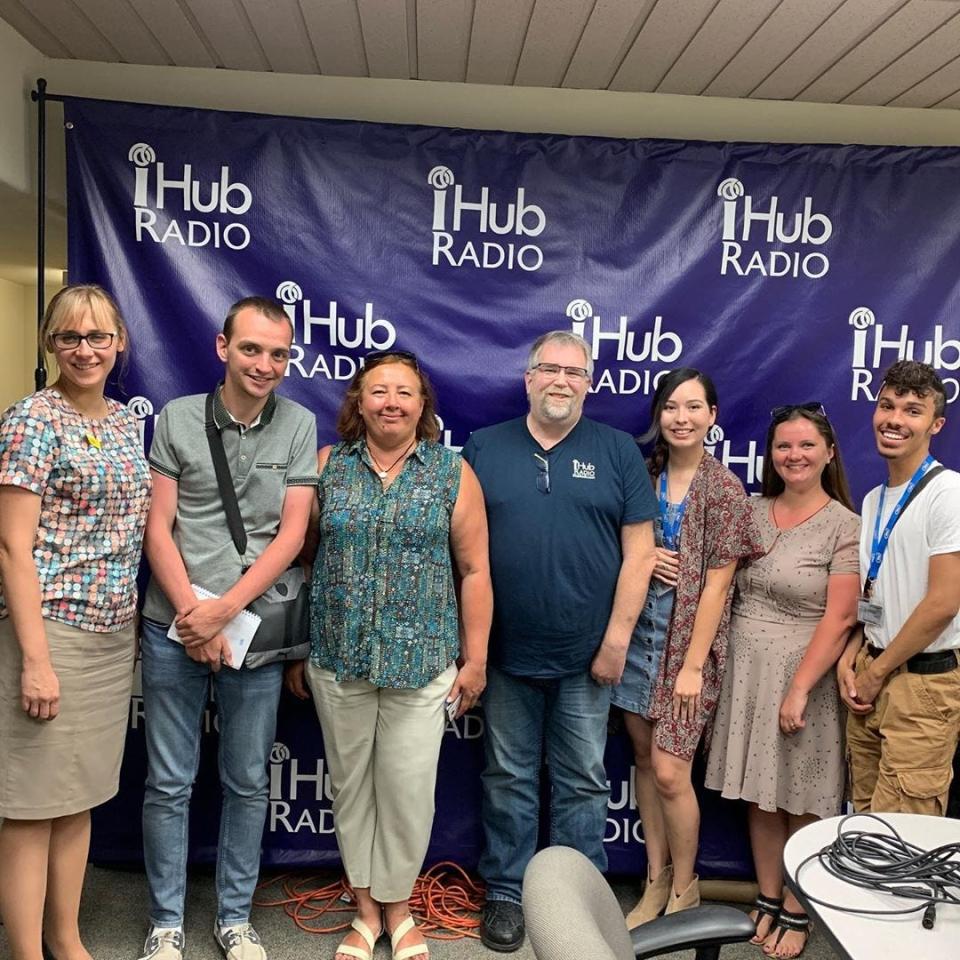
When reporters leave the valley, so does their institutional knowledge, Plante said. Knowing the area and having contacts, he said, helps reporters cover their beats in more in-depth ways.
"It's kind of a heartbreak and the reader and the viewer is the ultimate loser," Plante said. And it's happening to local newsrooms across the country, he added.
It’s not uncommon for reporters to move to a new newsroom, city, region or state every few years. It’s a part of what is now the transitory nature of newsrooms, Franklin said.
“There’s just not the time or the bandwidth for the kind of in-depth, contextual beat reporting that, I think, is so important for community understanding,” Franklin said.
It affects news outlets’ ability to hold public institutions accountable, too, he said, because they don’t have a historical context.
“Something gets lost when you don’t have the kind of capacity to do that kind of beat reporting,” Franklin said.
Statehouse pressrooms, for example, have been gutted, he said.
“All these institutions that affect people's businesses, livelihoods, education and ability for economic success are all going either uncovered or are not covered nearly aggressively enough,” Franklin added. “That is a real concern.”
"The Coachella Valley is fortunate not to be a news desert,” said Mark Talkington, who worked at The Desert Sun in the 1990s, then moved on to ESPN.com and MSN.com before founding the Palm Springs Post and, more recently, the Coachella Valley Reporter. “It just hasn't been well-served."
"We've been mostly a stepping stone and training ground for reporters on the way up," he said.
Workers seek improvements
Those who are not in the journalism industry or who don’t know someone in the field often overestimate the pay scale, and the glitz. Alvarado, formerly of NBC Palm Springs, said that local TV news is demanding and not as glamorous as those outside the industry might think. Alvarado had to shoot and edit her own stories for broadcast, in addition to posting them online.
"It takes all day to do like two minutes of TV," she said. And, with the tight deadlines and low staff levels, she added, it's easy for reporters to get overwhelmed. "And you have to look your best at the end of the day." (While also doing your own make-up.)
"If it really isn’t your passion, you’re not going to hang around that long," she said.
For eight years, she commuted nearly 90 minutes every day to the Coachella Valley from her home in Murrieta. By accepting a job at KPBS in San Diego, her commute is now 35 miles shorter. KPBS is also an NPR affiliate and a union shop, so, though she misses the valley, Alvarado said she is happy in her new role.
More journalists are seeking to work in unionized newsrooms.
“We have seen, in the last three or four years, a real wave of newsrooms becoming unionized and even the Chicago Tribune is now a union newsroom, which would have been unthinkable 10 or 20 years ago,” Franklin said. “It’s a way for journalists in newsrooms ... to try to get some degree of security.”
The editorial staff at The Desert Sun voted to unionize last year and are in the process of bargaining their first contract. The Arizona Republic, another Gannett newsroom, voted to unionize before the pandemic in 2019. The Los Angeles Times unionized the year before that.
And the journalism industry isn’t alone. Other industries, including coffee shops, grocery stores and Amazon factories, are part of the union wave.
Funding the news
Journalists, editors, companies and communities are all looking for ways to make journalism a sustainable operation.
Democrats attempted to address the problem via the Local Journalism Sustainability Act and Journalism Competition and Preservation Act — part of President Biden’s initial Build Back Better bill. The measures would have provided subsidies to media companies, but stalled on Capitol Hill.
California, too, has its own bill aimed at addressing some of the issues the journalism industry faces: Senate Bill 911, which would establish the California Board to Fund Public Interest Media. The idea is modeled after New Jersey’s Civic Information Consortium, which aims to help fund new media projects in that state in order to combat misinformation and encourage community engagement.
A version of SB 911 passed in the California Senate on May 26 and is now under consideration in the Assembly.
But whether initiatives such as this will successfully turn the tide is unclear.
“I don’t know that there’s any one answer to this crisis that we’re in,” Franklin said.
But it's not all bad news.
Although the pandemic resulted in cuts to local newsrooms, Franklin said that, in at least one way, it helped remind people of the importance of local news.
“More and more people are willing to pay for news – that, to me, is encouraging,” Franklin said. “As a result of the pandemic, there’s been a surge in digital subscriptions in local news organizations over the last couple of years.”
He called it a “reawakening.”
Locally, The Desert Sun has sought assistance from nonprofits like Report for America, which aims to bring more journalists to local newsrooms, and The Coachella Valley Journalism Foundation, which was established just over a year ago to help fund local news. Through Report for America, the newspaper was able to hire two temporary reporting positions – tribal affairs and senior issues, partially funded by the nonprofit and partially through community donations.
The Coachella Valley Journalism Foundation helped raise money for the newspaper to hire an opinion editor when budget cuts at its parent company, Gannett, left no funds for the position.
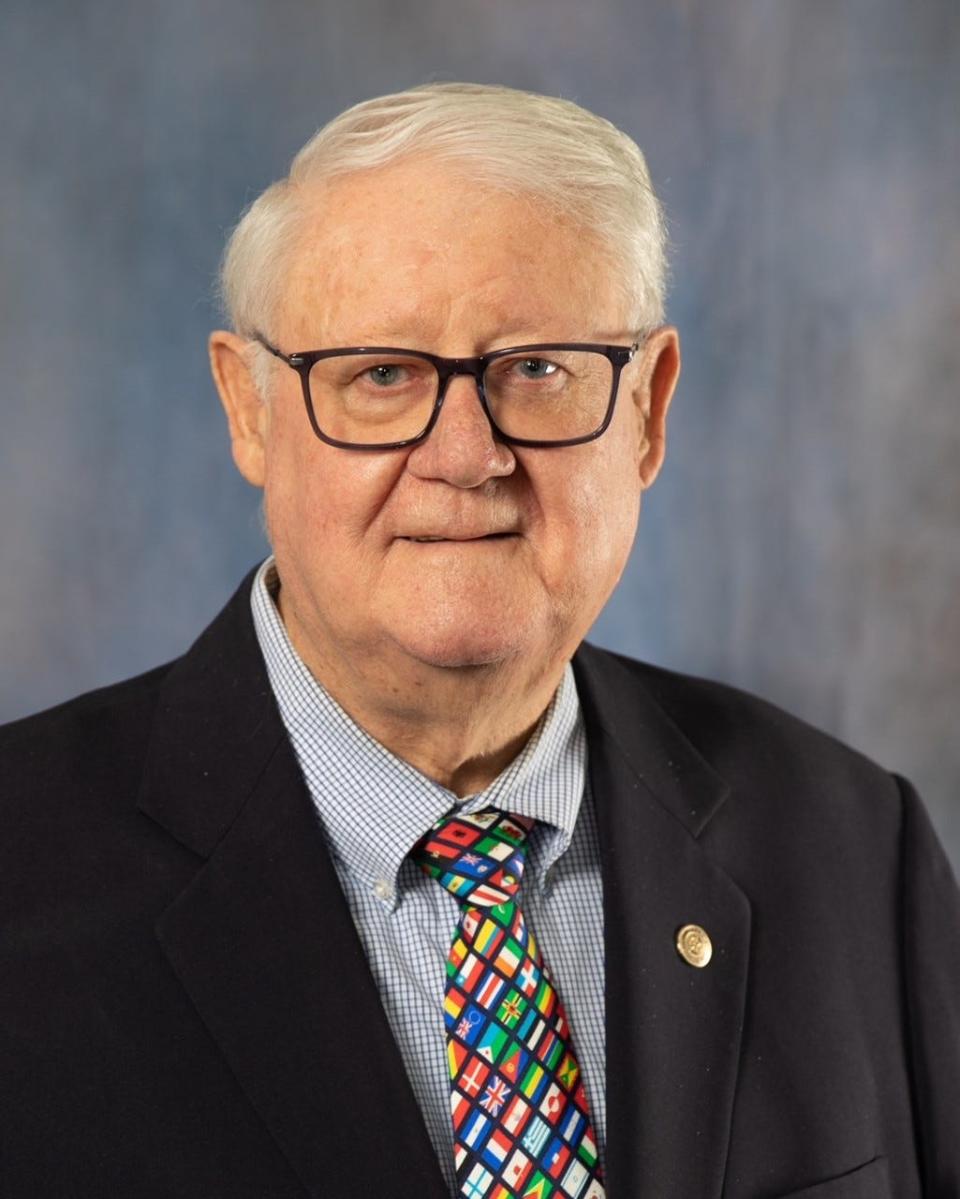
“One way to find out if the community wants to have a good viable newspaper is to raise some money,” said Ricardo Loretta, CVJF president. “If we do that, and then we are honest with the analysis of the results, we’ll start getting a picture of how much support we have.”
More than 130 different people donated to the cause in a three- or four-month period with some donating as little as $5 or $10 and others donating up to $10,000, Loretta said. CVJF is now seeking donations to fund the position for a second year.
The CVJF is also underwriting internships for multiple local news outlets.
The Palm Springs Post has also been successful in securing community donations. Additional funding sources include advertising, grants and a partnership with Indiegraf, which helps support independent publishers.
In 2020, The CV Independent independent newspaper was assisted by funds from federal disaster loans, state grants, Google and the Facebook Journalism Project. The free newspaper had lost nearly 85% of its ad revenue.
“It was a struggle just to get the paper out at that point,” said Jimmy Boegle, founding editor. “Those types of grants (as well as support from readers) really helped us get through the really rough times.”
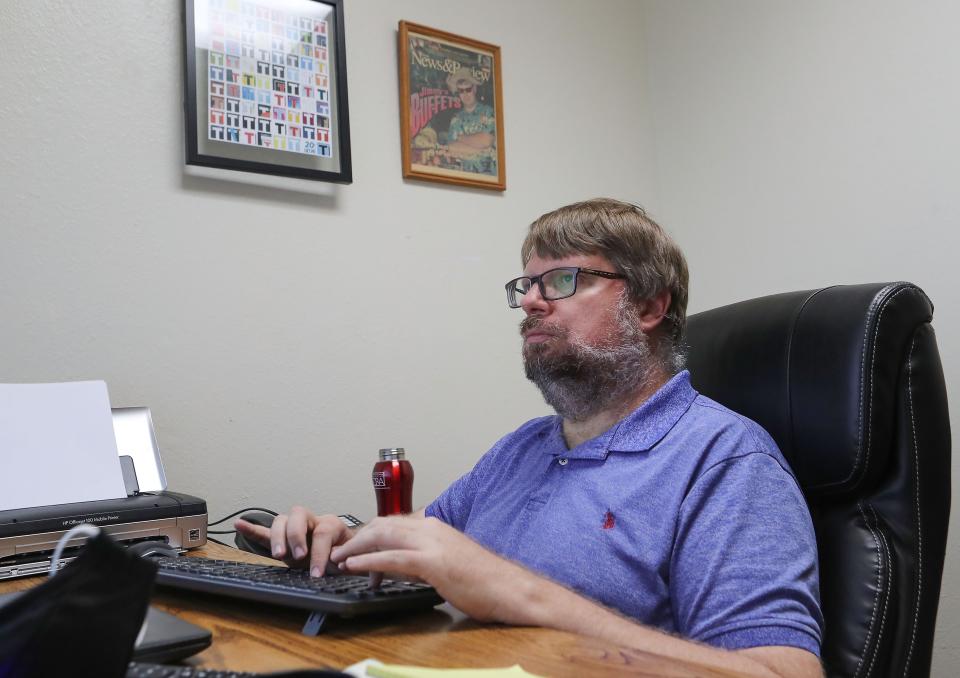
Boegle, who relies on freelancers for content, has acquired the Reno News & Review — a publication that cut its print edition and staffing in 2020 — and is working on rebuilding it. It was clear the community had missed the print edition, he said, as they kept asking when it was coming back.
“There are a lot of people who get their news via print still,” Boegle said. “It’s not just older readers.”
While The Desert Sun received some pushback from readers regarding its print reductions, others see it as inevitable.
"My husband and I are both seniors who enjoy The Desert Sun online. We transitioned from the paper edition years ago for three reasons: trees, money and delivery issues," wrote Anne Tufo of La Quinta. "Saving a tree, no messy ink, and quiet page-turning are perks to online reading."
Is change inevitable?
When LaMont left NBC Palm Springs station in January 2022, Trino Martinez took over as news director and said no programming changes were expected. By April, however, the morning and midday newscasts were being trimmed and Martinez said the company was considering restructuring.
"We're undergoing a few changes," Martinez told The Desert Sun ahead of Sanchez's departure on April 8. "Also, we're evaluating our franchises and deciding how we want to move forward and with which ones."
Reporters and anchors moving on to larger markets is part of the "growth process" in the news business, he added.
Jeffery Liberman, president and chief operating officer of NBC Palm Springs’ parent company, Entravision, said that the programming changes at the station were made in response to viewer habits.
"We found that more people were watching in the afternoon and evening hours, and so we strategically reallocated our resources and refortified our afternoon and evening news programs with the resources initially apportioned towards the early morning hour," he said.
NBC Palm Springs' News at 5 had a 3.2 rating during a midweek broadcast in March, according to Comscore analytics from March 2, meaning that 3.2% of households in the market were watching the station. At the same time, KESQ Newschannel 3 Live at Five had a 6.5 rating.
During the 5 p.m. broadcast, 40% of households in the area had their televisions turned on. Of those households watching TV, KESQ had the attention of 16.5% of the households (known as "the share") while NBC had 8.1% of the share.
“Our NBC Palm Springs station, like any other organization, has experienced change in light of the pandemic and overall macro conditions," added Liberman. "Despite changes behind and in front of the camera, our Palm Springs station remains an important source of local news."
KESQ and CBS Local 2 will be adding a newscast to its lineup come September. It will air on weekdays from 4 to 5 p.m. followed by the station’s 5 p.m. newscast.
“We believe that the Palm Springs market is hungry for local news and information,” Upham said in the announcement. “This gives viewers the opportunity to get breaking news and the day’s top stories earlier, and with a trusted, dedicated team.”
The newscast will fill the space left by the ending of The Ellen DeGeneres Show.
Programming options available to affiliate stations have decreased since the entertainment industry has become more competitive, Upham said.
“We know that local news appeals to people,” he said. “We know that advertisers like it,” he added.
Unlike NBC Palm Springs which includes sponsored segments throughout its newscasts, KESQ keeps its advertisers sequestered in commercial breaks during newscasts. Upham said the decision is a local one and one the station is sticking to.
“We want to remain a trusted source for local news and information,” and having sponsored content, he said, takes away from that mission. The station may consider, however, having such content in any lifestyle programming it adds in the future.
In recent years, the line between what is news and what is opinion or advertising has become murkier, particularly on TV. Advertisers can pay for segments to look like a newscast or, in some publications, even pay for an article or cover story. These stories and segments should be clearly disclosed as such, but aren’t always.
Boegle, editor of CV Independent, said that he’s been approached by businesses wanting to pay for cover stories. They ask: “How much can I get a cover story for?”
“You can’t,” he replies. “We don’t sell those.”
Reporters in traditional newspapers like The Desert Sun have had — and reject — similar inquiries.
Increased media literacy and community engagement may help dispel some of the misconceptions readers and viewers have about the industry, especially in local markets.
“More people need to understand the news industry,” Jackson said. “More media literacy classes and workshops informing people about finding credible news sources and truth are critical in helping people navigate their way through this media-saturated world.”
“We live in a different age and we need to adjust,” she said. “Education is key.”
This article originally appeared on Palm Springs Desert Sun: Palm Springs area media landscape changed by pandemic, other economic forces

